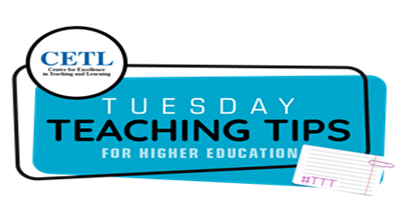Good day Colleagues,
We are currently in our mid-semester/mid-term phase that is characterized by a series of in-course assessments, grading and feedback. We hope that we have been an asset in helping you navigate this phase. In our previous installments of #TTT for the semester thus far, we have explored topics such as accessing myelearning, adding learning resources to your course site, tips for engagement in teaching and learning, engagement in synchronous online classes, considerations for the selection of appropriate technologies for teaching and learning, creating exemplary learning outcomes and most recently, assessments and the power of artificial intelligence (AI). As we continue with our mid-term assessment season, we would like to explore alternative assessments, formative assessments and the myeLearning Assignment Activity.
A – Alternative vs Traditional Forms of Assessments
The primary goal of alternative assessments is to measure the learners’ proficiency in a particular field. Alternative assessments therefore indicate a paradigm shift away from traditional forms of assessments which often focus on the learners’ level of knowledge via in-class quizzes, essays, or final examinations. As such, alternative forms of assessment allows students to perform or execute tasks, which are observable forms of behaviour – for example, students may be required to conduct a research project, perform a surgical procedure (or simulation), perform/create an artistic piece, or implement flood-prevention measures in a particular community. In so doing, alternative assessments help to develop higher order thinking skills in learners, and increases retention through the completion of more authentic (real-life application) tasks. Alternative assessments have become more prevalent and strongly advocated among various international educational institutions due to the pandemic and the resulting transition to remote education, and more so, because of the well-researched benefits they provide. When combined with formative assessments, alternative forms of assessments enhance the teaching and learning experience with a deep-level and more long-lasting impact on the learner.
B – Formative Assessments & Feedback
Formative assessments and feedback occur during the semester (e.g. mid-term assessments), and therefore provide insight to your students’ learning while they are still in the course. The goal of formative assessment is to monitor students’ learning and provide ongoing feedback that you can use to improve your teaching, and students can use to improve their learning.
Otherwise known as assessments for learning, formative assessments are usually low stakes (not too heavily weighted), and alert you to students’ weak/problem areas which you can address immediately. In so doing, formative assessments provide you with opportunities to make surface-level adjustments to your instructions (e.g. to review a course topic/issue your students may be struggling to understand or master) from which they can benefit. Additionally, formative assessments and feedback help students to recognize their strengths and weaknesses and target areas that need work/attention.

It is important that we become familiar with the various options for formative and/or remote assessments while staying aware of the benefits and barriers of conducting these online exercises/activities to maximize students’ learning throughout your course. Along with the UWISTA’s guidelines for alternative assessments, the list of resources below should orient you to useful tips and options for alternative assessments in your course/programme context.
C – myelearning Assignments
An important part of teaching and learning is assessment. In myeLearning, assessments may be facilitated through a myriad of activities such as Assignments. The Assignment activity allows educators to collect work from students, review it, grade it, and provide feedback. In so doing, it strongly facilitates formative assessments. Using the regular assignment activity, students can submit electronic files (e.g., Word-processed documents, spreadsheets, images, audio, video clips) or type their responses directly into myeLearning. Students’ work may be visible only to the teacher for grading and feedback. The Assignment activity is comparable to the Dropbox functionality. To further assist you in this regard, we have provided the following resources which include archived webinar recordings for you and your learners, tutorial videos and tip-sheets on creating the Assessment Activity in your myeLearning course, and the registration link to our upcoming professional development webinar Assessment for Students’ Success scheduled for Friday 1st November, 2024 at 10:00 AM to 12:00 PM. Also included below is. Additionally, the list comprises a tutorial video on creating assignments in your myelearning course, and documents/tip-sheets (with steps and illustrations) that will help you through the assignment-creation process:
-
Coping with Assessment Anxiety – A CETL Archived Webinar Recording for STUDENTS
-
Adding an Assignment Activity to your myelearning Course – User-guide/Tip-Sheet
-
Adding an Assignment to you myelearning Course – Tutorial Video
-
A Hitch-Hiker’s Guide to Alternative Assessments by Damian Gordon (2020)
-
Seven Smart Ways To Do Formative Assessments
-
For Further training and resources, please see The CETL’s Dates For Your Diary (Training Schedule) AY 202425
-
Assessment For Students’ Success – An UPCOMING CETL Webinar – Registration Link


